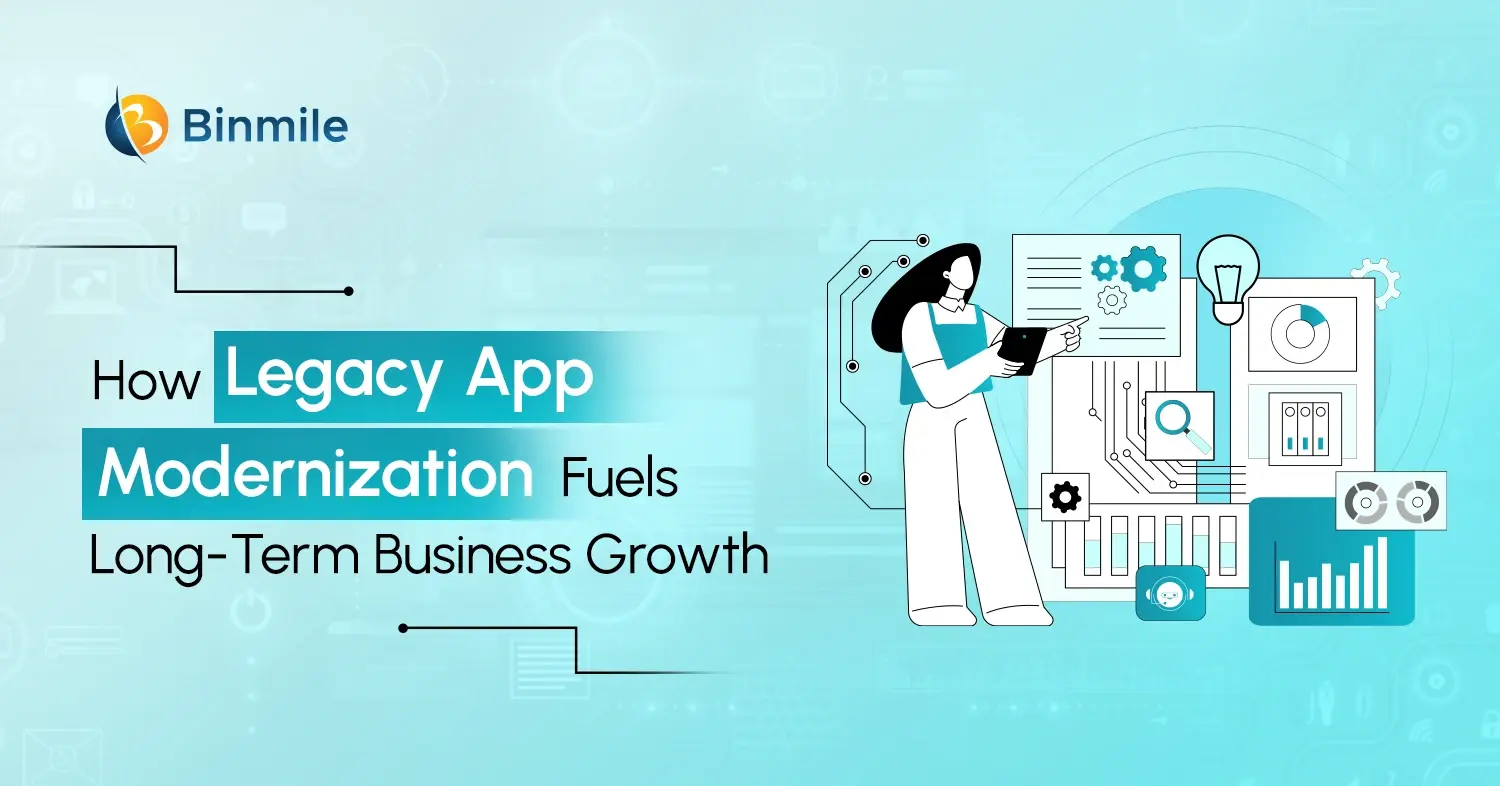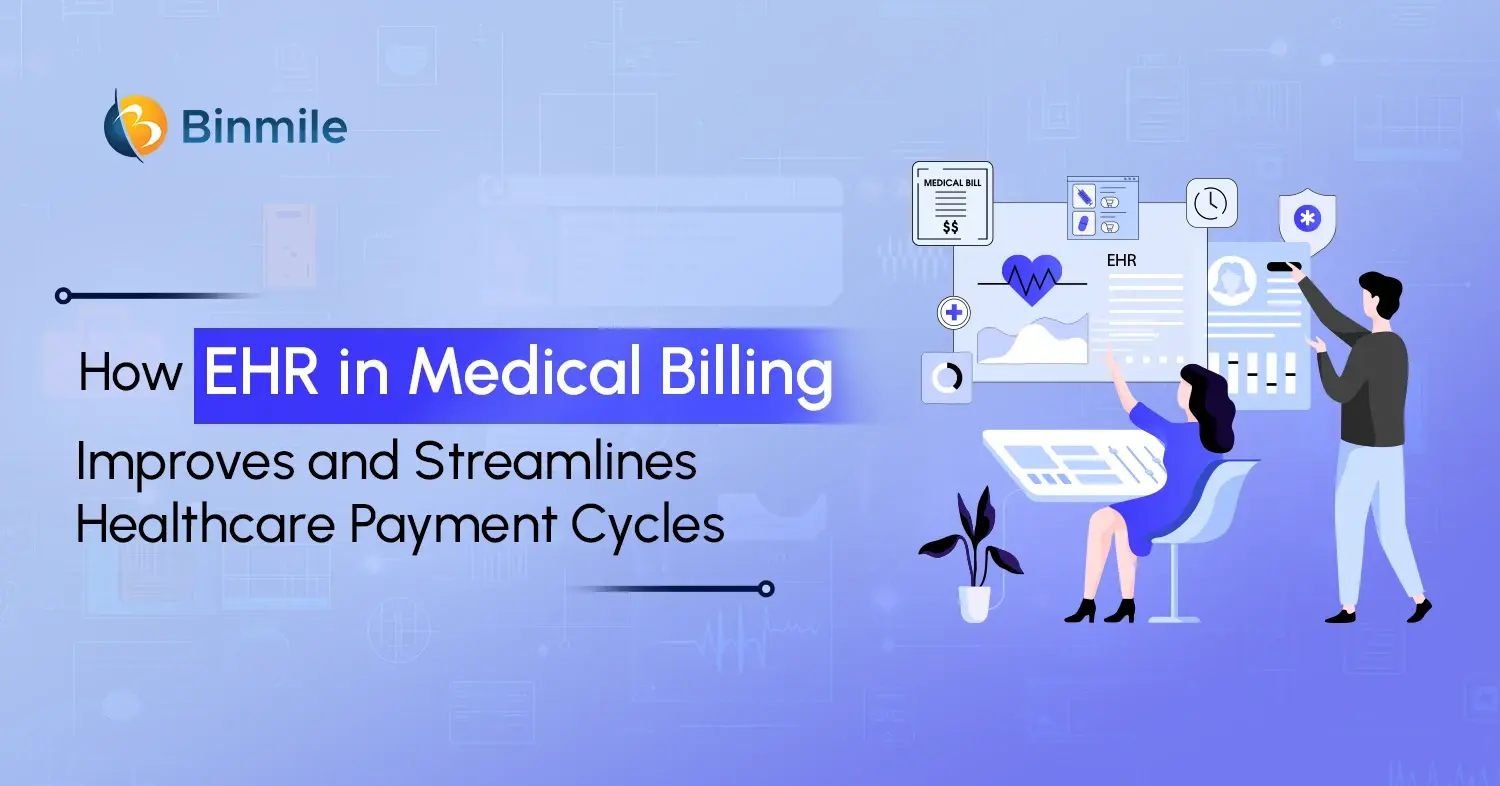- best practices to modernize legacy software in healthcare
- legacy system in healthcare
- modernize healthcare system
- need of modernization in healthcare
- Optimize Healthcare Software Modernization
- process to modernize healthcare software
- risk in healthcare system
- software modernization in healthcare
- strategy to modernize legacy system in healthcare
- types of healthcare system
Technology has significantly transformed the way healthcare professionals and service providers deliver patient care. From telemedicine and wearable devices to AI-powered applications for remote monitoring, these innovations enhance accessibility, efficiency, and overall healthcare quality. Yet, nearly 73% of healthcare professionals are still relying on outdated systems, limiting their ability to deliver safe, reliable, and scalable services. So, why do healthcare service providers hesitate to opt for healthcare software modernization, despite the challenges? Concerns over costs, operational disruptions, and data security risks often deter them from upgrading their healthcare legacy systems.
However, modernization of healthcare systems is crucial for improving efficiency, scalability, and security while ensuring long-term sustainability in healthcare operations. To make informed decisions, healthcare providers must weigh the benefits and challenges of modernization instead of relying solely on conventional failure scenarios. In this blog, we’ll help give you an in-depth analysis of the needs, challenges, and strategies to know before you modernize healthcare systems. In addition, we’ll share a step-by-step process of modernizing legacy systems in healthcare, which will help you enhance operational efficiency and navigate the evolving industry standards while offering the best patient care.
What is a Legacy System in Healthcare?
When you talk about legacy systems in healthcare, you’re referring to outdated software or infrastructure that was initially cutting-edge when first implemented but has become obsolete over time. The reasons could be technological advancements, changing regulations, and evolving healthcare needs. Yet, organizations continue to feel the need for legacy systems despite their limitations, mainly because of their reliability, cost-effectiveness, and familiarity.

Types of Healthcare Systems:
- Electronic Health Records (EHRs)
- Hospital Information Systems (HIS)
- Practice Management Systems (PMS)
- Laboratory Information Systems (LIS)
- Radiology Information Systems (RIS)
- Picture Archiving and Communication Systems (PACS)
- Pharmacy Management Systems, and more
Key Risks of Not Modernizing Healthcare Software for Providers
When you fail to upgrade IT systems, it not only impacts operations but may also lead to inefficiencies, security risks, and missed technological opportunities. There are other risks also, such as:
- Compromised Patient Safety: Outdated systems increase errors, misdiagnoses, and adverse events due to poor data accuracy, ineffective communication, and lack of interoperability.
- Data Breaches & Compliance Risks: Legacy systems lack strong security measures, making them vulnerable to cyberattacks, fines, and legal consequences for non-compliance with regulations.
- Inefficient Operations & Workflows: Older systems cause downtime, slow performance, and compatibility issues, leading to disruptions, staff frustration, and decreased productivity.
- Inability to Leverage New Tech: Sticking with legacy systems limits access and hinders your capability to adopt emerging technologies such as AI, machine learning, and automation, tools that improve patient care and reduce costs.
- Competitive Disadvantage: Digital healthcare demands seamless experiences, which can only come when your digital ecosystem evolves with advanced technologies. Older systems can drive patients elsewhere, harming revenue and reputation.
Modernizing Legacy Systems in Healthcare: Essential Strategy to Follow
A well-structured modernization strategy not only improves system performance but also enhances scalability, security, and clinical outcomes. So, let’s explore 5 key components of healthcare IT modernization to help you achieve sustainable digital transformation.

1. API-First Architecture & Microservices
Modernizing legacy systems starts with breaking down monoliths into modular microservices aligned with core business functions like billing, patient records, or clinical decisions. This way, each group handles billing, stores patient information, or supports crucial medical decisions. Because each part processes transactions on its own, the system can be optimized stage by stage without needing a significant redesign. Following this system leads to scalability, easy deployment, and better error handling, so healthcare teams can more readily meet new medical and business challenges.
2. Cloud Migration with Hybrid Integration
By using a hybrid cloud, health organizations can perform legacy system migration or upgrade their IT infrastructure securely and responsibly. You can switch over non-critical components to the cloud initially to access improved scaling, automated processes, and disaster recovery. The primary workloads are retained on-site, waiting for strong security and official compliance. Using this phased approach keeps operations stable, allows for an easier change to cloud services, and enables connections with telehealth and analytics platforms.
3. UX Redesign & Clinical Workflow Optimization
For modernization to work, digital systems have to be in sync with digital interfaces and clinical workflows. If your UX design is too complicated, it leads to a frustrating experience and lowers the rate of user adoption. The redesign looks into current tasks and designs user-friendly tools that save time on things such as charting or ordering medications. When healthcare professionals and patients are at the centre of the customer experience engineering process, it offers seamless navigation and attractive visuals, leading to embracing new technologies that are more likely to help, instead of disrupt, clinical routines and improve care delivery.
4. Data Modernization & Interoperability
Legacy healthcare systems often trap data in silos, limiting care coordination and analytics. Data modernization focuses on adopting standards like HL7 FHIR (it’s a next-generation, web-based standards framework to facilitate the exchange of healthcare information securely and efficiently). Thus allowing the collection of all related data into a central database and allowing all data to be exchanged between systems instantly. As a result, all types of applications can use the same standard, clinical decisions can be improved, and organizations are equipped for using AI that demand clean, structured, and interoperable datasets.
5. Zero Trust Security & Modernization
Healthcare IT must adopt a Zero Trust model where no user or device is inherently trusted. This includes replacing outdated authentication with modern identity controls, applying end-to-end encryption, and enforcing continuous access verification. Combined with real-time auditing and vulnerability testing, Zero Trust reduces breach risks, ensures your healthcare services are compliant with essential security standards such as HIPAA compliance, and protects sensitive health data while maintaining system availability across all endpoints.
How to Optimize Healthcare Software Modernization: 7 Best Practices
So far, we’ve learned what is healthcare legacy modernization is, its benefits, and a few strategies to keep in mind before starting on legacy software modernization for healthcare systems. Let’s shift our attention to how to execute healthcare modernization projects with the 7 best practices:

1. Establish System Inventory Practices
Before making any changes, take stock of your entire top software for the healthcare system landscape. Catalog applications, third-party tools, system integrations, and compliance touch points across departments. Go beyond the surface and identify workflow dependencies, legacy systems, and overlapping functions. This gives teams a clear view of what’s running, what’s redundant, and what poses risk during transitions. It also uncovers technical debt in software that could derail future initiatives. Therefore, a thorough inventory assessment sets the stage for more intelligent prioritization, minimizes disruption, and creates a foundation for structured modernization planning.
2. Engage Cross-Functional Stakeholders Early
Modernization efforts that exclude end users often fall short, so include clinicians, operations teams, compliance leads, and analysts early in the process. Their insights help shape solutions that reflect daily realities, both regulatory and practical. This collaborative model fosters alignment, reduces resistance, and solves surface issues that might not show up in system logs. You could also conduct structured engagements like workshops and pilot programs to create shared ownership. Doing so will ensure that the final solution is practical, usable, and aligned with business needs from day one.
3. Establish Scalable DevOps Frameworks
A successful modernization strategy depends on how well your teams can build, test, and deploy changes. Establish a DevOps pipeline that automates testing, deployment, and monitoring across environments. Embrace infrastructure-as-code to maintain consistency, especially in hybrid setups. The result? Faster releases, fewer outages, and better system reliability. This kind of operational discipline supports agility, aligns with compliance through traceability, and ensures teams are equipped to maintain progress well beyond the initial implementation.
4. Prioritize Change Management Strategies
Even the best technology fails if users aren’t prepared, so deliver role-specific training for clinical and non-clinical staff. Use hands-on sessions, simulations, and short guides to ease the transition. Equally important is to establish feedback loops so teams can flag what’s working and what’s not. This approach not only speeds up adoption but also ensures that system upgrades lead to measurable improvements in productivity, efficiency, and patient care.
5. Design with Future Growth in Mind
Don’t modernize just to fix what’s outdated; prepare your systems to support the future. Evaluate how your current architecture accommodates technologies like AI-driven diagnostics, remote care, and wearable integration. Prioritize open standards and modular platforms to remain vendor-neutral and adaptable. Future readiness isn’t about predicting the next big thing. It’s about building the flexibility to evolve on your terms, at your pace, without redoing foundational work. Therefore, invest in resilient, scalable solutions that seamlessly integrate with emerging AI innovations in healthcare for overall enhanced capabilities and future-proof your systems.
6. Adopt Incremental, Outcome-Focused Funding
Traditional, top-heavy budgeting models often stall progress; instead, fund modernization in manageable phases tied to business outcomes and clinical goals. Break down project funding into smaller, sequential investments depending on delivering incremental value that can be delivered, measured, and adjusted as needed. You also pair this with a governance structure that includes cross-functional reviews and regular checkpoints; this not only accelerates delivery but also keeps teams accountable and aligned with strategic objectives throughout the process.
7. Define Department-Level Data Governance
Modern platforms generate and share more data than ever, and maintaining consistency can be a challenge without clear ownership. Assign data stewards (they ensure that data is accurate, complete, consistent, and reliable) within each department to maintain quality, control access, and enforce standards. When you’ve a defined stewardship model, you not only have high data quality in AI or other tech-driven systems but you also strengthen regulatory compliance and promote collaboration between different departments, making the data management cycle smoother as your ecosystem evolves.
Closing Remarks on Healthcare Software Modernization
As healthcare organizations advance their digital capabilities, modernizing healthcare systems has become necessary for improving patient care, meeting compliance requirements, and increasing operational efficiency. This is especially true when outdated applications often lead to delays, integration issues, and maintenance overhead that hinder clinical and administrative performance. However, to successfully modernize healthcare systems, healthcare professionals need careful planning that aligns with clinical workflows, security standards, better patient care, and long-term goals.
When done right, it strengthens day-to-day operations and supports better patient outcomes. Hopefully, this blog has shown you the right direction for sustainable modernization in healthcare. Additionally, partnering with healthcare software development services can help manage complexity by offering support across assessment, implementation, and integration, allowing internal teams to focus on core clinical responsibilities.









